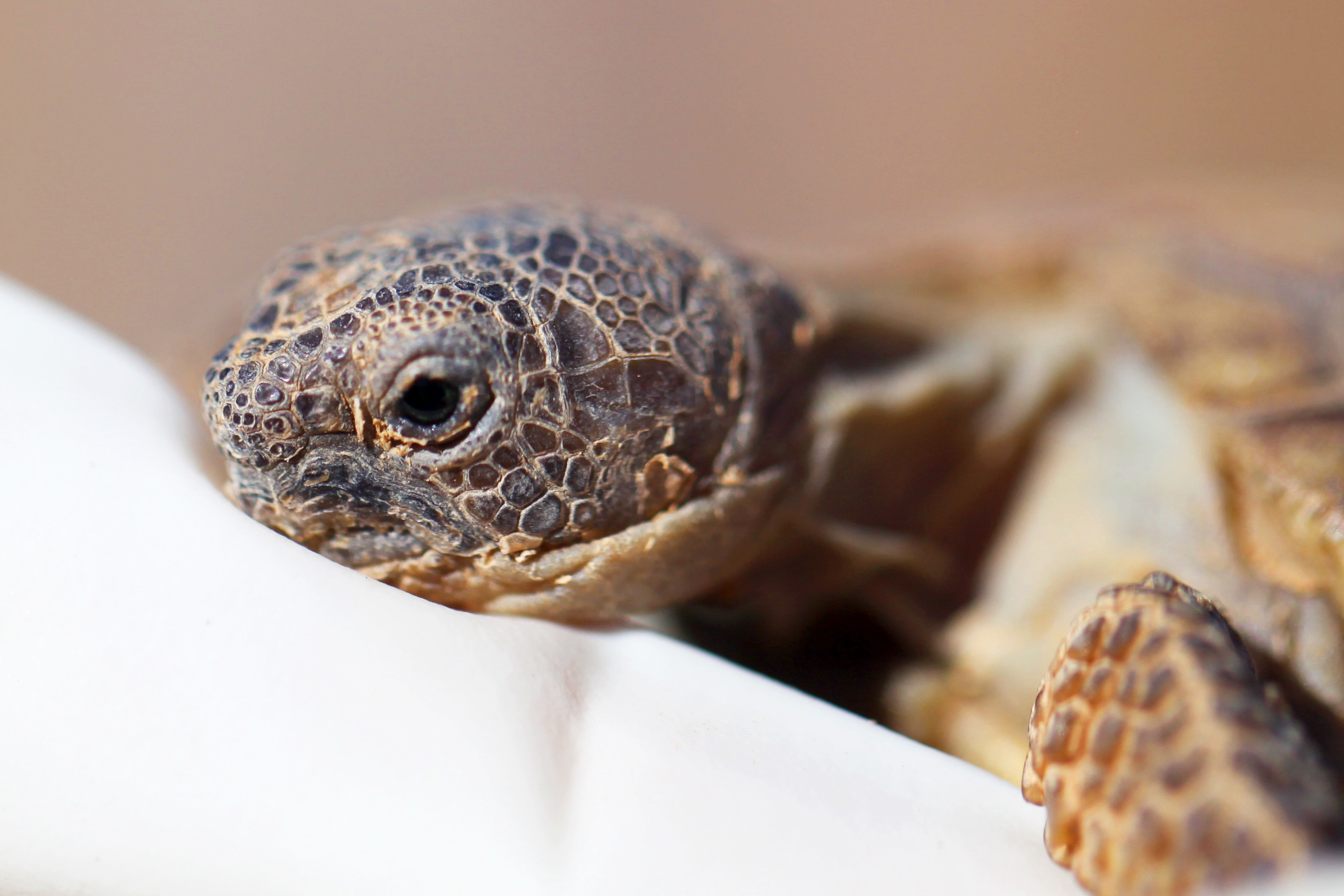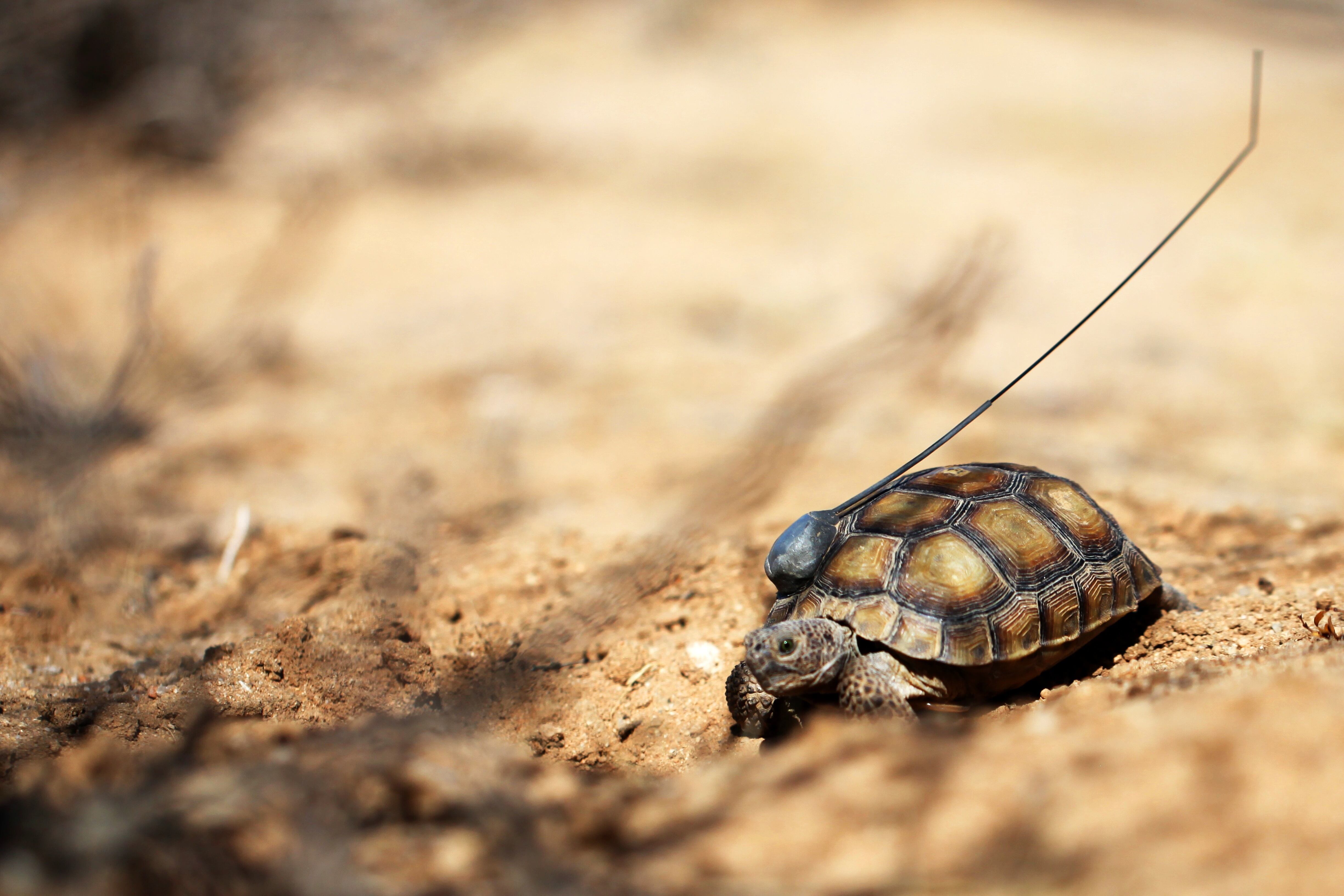For roughly half the cost of a single F-35B, the Marine Corps plans to move more than 1,100 desert tortoises from its combat desert training base at Twentynine Palms, California, and monitor the animals for 30 years, a base spokesman said.
The Marine Corps will spend $50 million over the next three decades to relocate, monitor and research desert tortoises that currently reside on land where leathernecks will soon be training.
The tortoises, which are listed as threatened under federal law, live on a portion of the 164,000 acres that became part of Marine Corps Air-Ground Combat Center Twentynine Palms in December 2013, said Capt. Justin Smith, a spokesman for the base the Marine Corps Air Ground Combat Center Twentynine Palms.
"The Marine Corps will monitor its tortoises intensely for the first five years after translocation, with monitoring requirements reducing over time out to the full 30-year obligation," he said. said Capt. Justin Smith, a spokesman for the Marine Corps Air Ground Combat Center Twentynine Palms."The total cost for this translocation effort, including all monitoring and research, is estimated at approximately $50 million."
Despite its $50 million price tag, the project is not a major expense for either the Marine Corps or Defense Department, said Todd Harrison, a budget expert with the Center for Strategic and International Studies.
"To put it in perspective, $50 million over 30 years is about two-ten-thousandths of 1 percent of the defense budget over that time — which is to say, it is a very, very, very small amount of money in the grand scheme of things," Harrison said. "You could cut hundreds of things like this and it still wouldn't add up to much in the budget. It's less than a rounding error."
The tortoises, which are listed as threatened under federal law, live on a portion of the 164,000 acres that became part of the Marine Corps Air Ground Combat Center in December 2013, Smith said.
This fiscal year, the Marine Corps plans to spend about $7 million to move the reptiles tortoises, conduct annual health assessments of the tortoises, and house smaller juvenile tortoises in holding pens until they are large enough to make the trip safely, Smith said.
"Based upon climatic conditions, the animals will be moved at a time that is most optimal and that induces the least amount of stress on the animal," he said. "We will be conducting many studies throughout the 30-year translocation and monitoring process that will aide in gaining more information in the efforts to recover the population of the desert tortoise. This includes population documentation, survivorship and assimilation."

A plan to relocate desert tortoises, like this 3-year-old inhabitant, from the Marine Corps Air-Ground Combat Center, Twentynine Palms, Calif., has been delayed. Even so, a large combat training exercise this summer will proceed as scheduled. There will be no live-fire training near the tortoises' habitat, Marine Corps officials say.
Photo Credit: Marine Corps
The Center for Biological Diversity recently gave the federal government 60 days' notice that it intends to file a lawsuit to stop the tortoise relocation, said Ileene Anderson, who coordinates the group's campaigns in Southwest U.S. deserts.
Past efforts to relocate tortoises have shown that the animals will try to go back to where they used to live, Anderson said.
"Somehow, they know the direction to go, despite how they move them, and they start moving back toward their old homes," she said. "At their old homes, they used several different burrows, which they can dash down into and evade predation."
Without their escape burrows, the tortoises are susceptible to being eaten by coyotes, dogs, badgers and even ravens, Anderson said.
"In their territories, they know where to go to escape that," she said. "When they move them and they start making a break back toward home, they're on the surface a lot more than they normally would be; they don't know where there's any escape burrows and they've had catastrophic predation of these animals."
Still, Anderson said her group acknowledges that the tortoises will have to move somewhere because "obviously, tortoises are not going to do well in an areas were tanks are running them over." That's why her group wants the Marines to take safeguards, such as testing the tortoises for disease before moving them.
"They shouldn't move healthy tortoises into a diseased population and they shouldn't move the diseased tortoise into a healthy population," she said.

A desert tortoise, hatched nine years ago at the combat center's Tortoise Research and Captive Rearing Site, is released into the wild in September, next to a burrow biologists dug for her. A radio transmitter is attached to her shell for tracking.
Photo Credit: Kelly O'Sullivan/Marine Corps





